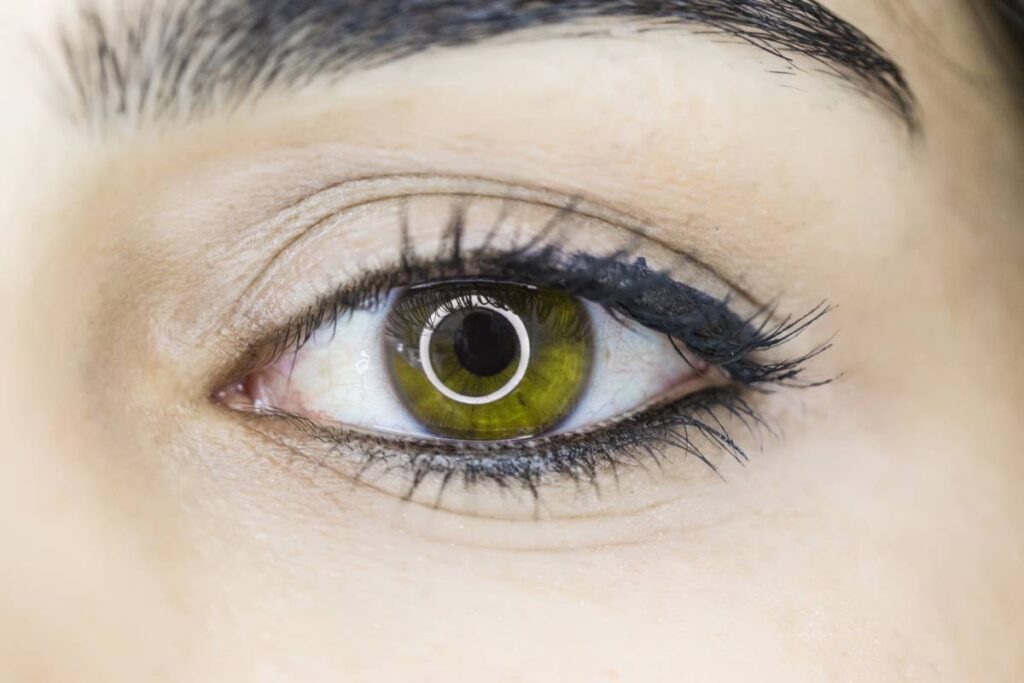One of the most popular types of plastic surgery [1], blepharoplasty is a surgical procedure that improves the appearance of eyelid droop — known as “ptosis” — and/or peripheral vision by removing excess fat, skin, and muscle. While blepharoplasties are occasionally performed on newborns to correct congenital ptosis, over 90% of patients are over the age of 40 [2]. The need for blepharoplasty often emerges during middle or late adulthood, when facial skin, muscles, and connective tissues begin to weaken and fat begins to accumulate in large deposits beneath the lower eyelids [2]. Consequently, the skin loses volume and the supportive muscles deteriorate, resulting in the sagging, folded appearance of the upper eyelids and the drooping, puffy “bags” underneath the lower eyelids. This deterioration can obstruct peripheral vision and limit eye opening. Therefore, blepharoplasty aims to repair the ptosis of the upper eyelids or to reduce the fat pads underneath the lower eyelids by changing the fat, muscle, and skin composition. Although the goals have remained the same since the surgical procedure first arose, recent advancements in the field have caused a shift from the traditional approach to a reconstructive technique, generating results that last longer [3]. Other recent trends in blepharoplasty include the incorporation of novel technologies, such as filler injections and microdermabrasion.
In the past, traditional blepharoplasties focused on removing excess fat, muscle, and skin, while the innovative reconstructive approach emphasizes repositioning fat, repairing muscles, and tightening tendons in addition to excising tissues [4]. Additionally, traditional blepharoplasty uses a transcutaneous incision while reconstructive blepharoplasty uses a transconjunctival approach, a method that has become favored among surgeons due to the lack of visible scarring [4]. Since being introduced in 1998, the transconjunctival approach has become the norm in blepharoplasty, with over 96% of lower eyelid blepharoplasties performed in 2018 utilizing this technique [5]. The development of the reconstructive blepharoplasty technique has been facilitated by the creation of CO2 laser technology — allowing for a less invasive and more precise surgical procedure — and increased anatomical knowledge of the structure of the eyelids [3]. Although 70% of blepharoplasties are performed for cosmetic reasons and the remainder for functional reasons [5], repairing and reconstructing the structures of the eyelid instead of merely removing excess tissue allows the surgical procedure to restore function in addition to improving appearance [6].
Studies suggest that oculoplastic surgeons should engage in honest communication and preoperative counseling to promote reasonable expectations, as well as exercise caution during the procedure to avoid scar abnormalities, overcorrection, and eyelid asymmetry [7, 8]. Moreover, the use of novel technologies, such as chemical peels, microdermabrasion and filler injections, can improve patient satisfaction and surgical outcomes by repairing damage blepharoplasty alone cannot fix [6].
References
1: Whitlock, J. (2019). The 10 most common plastic surgery procedures. Very Well Health. Online article. URL: https://www.verywellhealth.com/most-popular-plastic-surgeries-3157239.
2: American Society of Plastic Surgeons (2018). Plastic surgery statistics report. ASPS National Clearinghouse of Plastic Surgery Procedural Statistics. Online report. URL: https://www.plasticsurgery.org/documents/News/Statistics/2018/plastic-surgery-statistics-full-report-2018.pdf.
3: Bosniak, S. and Cantisano-Zilkha, M. (2005). Reconstructive blepharoplasty. Otolaryngologic Clinics of North America, vol 38. DOI: 10.1016/j.otc.2005.03.013.
4: Bedrossian, E. (2005). Reconstructive lower lid blepharoplasty. Ophthalmology Clinics of North America, vol 18. DOI: 10.1016/j.ohc.2005.02.001.
5: Kossler, A., Peng, G., Yoo, D., Azizzadeh, B., and Massry, G. (2018). Current trends in upper and lower eyelid blepharoplasty among American Society of Ophthalmic Plastic and Reconstructive Surgery members. Ophthalmic Plastic and Reconstructive Surgery, vol. 34. DOI: 0.1097/IOP.0000000000000849.
6: Naik, M., Honavar, S., Das, S., Desai, S., and Dhepe, N. (2009). Blepharoplasty: an overview. Journal of Cutaneous and Aesthetic Surgery, vol. 2. DOI: 10.4103/0974-2077.53092.
7: Whipple, K., Korn, B., and Kikkawa, D. (2013). Recognizing and managing complications in blepharoplasty. Facial Plastic Surgery Clinics of North America, vol. 21. DOI: 10.1016/j.fsc.2013.08.002.
8: Oestreicher, J. and Mehta, S. (2012). Complications of blepharoplasty: prevention and management. Plastic Surgery International, vol. 2012. DOI: 10.1155/2012/252368.



